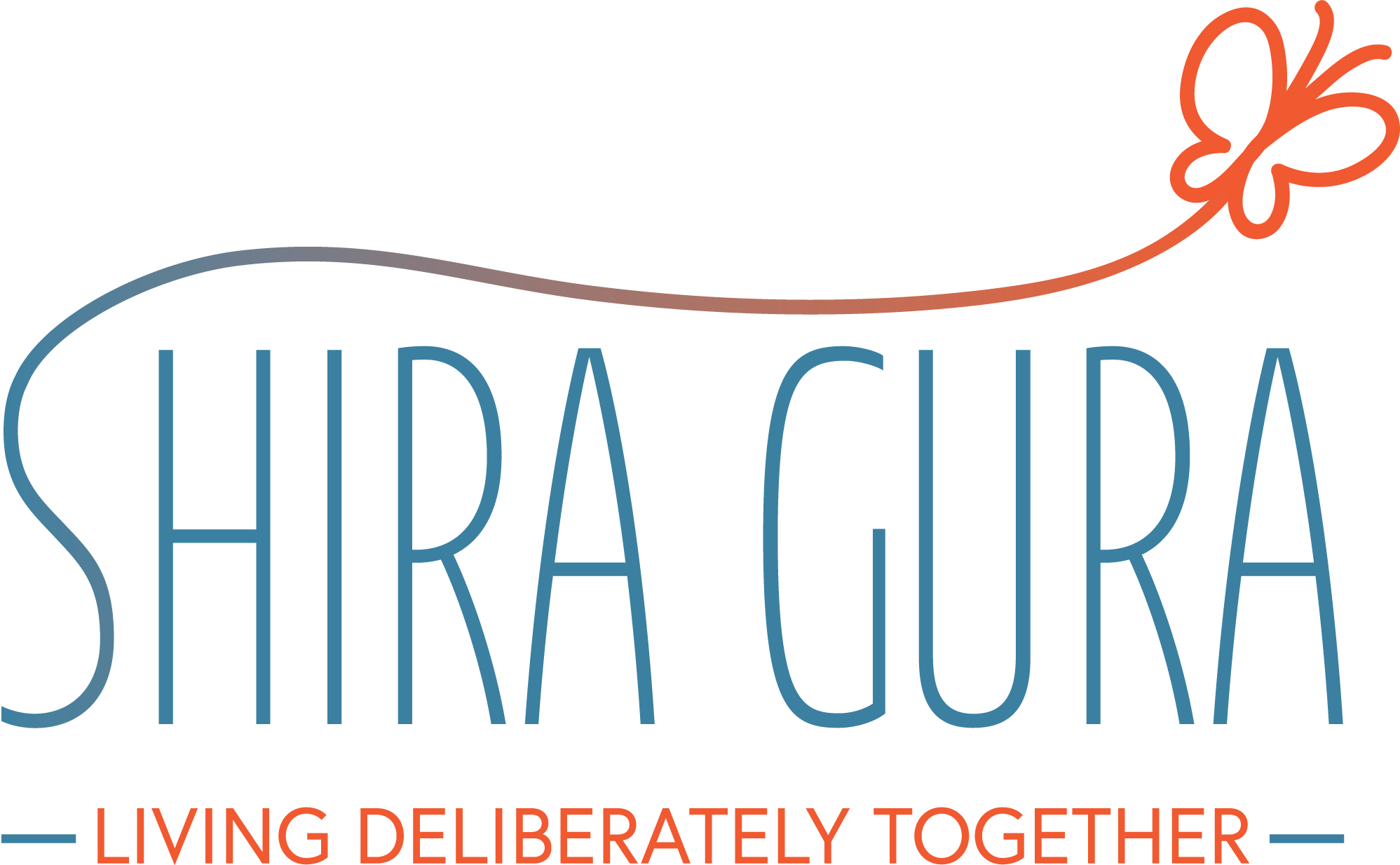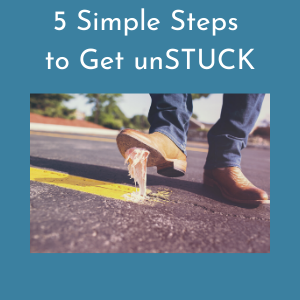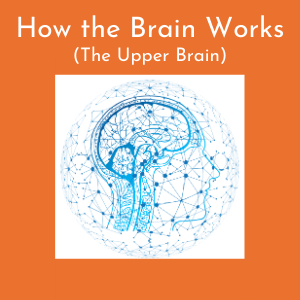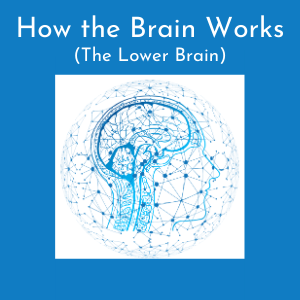5 Simple Steps to Getting CLEAR (during the Corona pandemic)
(This blog post was taken from The Living Deliberately podcast which you can tune into here.)
Many people around the world are feeling stuck, now more than ever, during the Corona (COVID19) pandemic. Many people around the world are in lock-down in their home and some are in self-quarantine. The world as we know it has turned on its head and many of us are little an entirely new reality than we’ve ever experienced before.
Getting unstuck is great. It’s awesome, in fact. It takes you from feeling like you’re stuck at the bottom of a whole to feeling like you’ve figured out how to climb out of that hole. It’s a great feeling. It’s a freeing feeling. It’s very empowering to get yourself unstuck.
And while living deliberately includes getting unstuck, it’s not just about getting unstuck. In other words, it’s not just about getting out of the whole, but it’s about anticipating the hole in the first and then preparing yourself if it should come.
I woke up this morning asking myself, what is it that I want to create today? Well, to be honest, I had a lot of answers – from self-care, to schedule for me and the kids, to creating music, to reading, to offering a yoga class, to creating joy for me and my kids, and more.
And so I thought about yesterday and how one of my kids complained that our exercise routine (jogging around the block for 30 minutes) isn’t fun. My son had a real sour face on and I have to be honest, I’m sometimes finding myself losing patience with my kids during this time. It’s not easy. On any of us. And I really don’t think I’m creating too many demands for my kids. They don’t really have school work and I am giving them screen time each day, but what’s really important to me, for their physical health, is that they do some sort of physical activity for 30 minutes every day.
If they were in school, they’d have gym class. OR if it was a normal day, they’d have baseball, or jujitsu, or they’d be playing outside and exercising naturally by just running around. But we don’t have that opportunity now. And yesterday I was really upset about one of my kids who just complained about having to exercise. It really just bothered me, and I kind of lost it.
So, today I recognizing I don’t want to create that situation again with my kids. I want to create joyful exercise. So, this is my starting point with living deliberately, knowing what it is I want to create.
I knew I had to get CLEAR because I anticipated a negative response from my kids.
 5 Simple Steps to Getting CLEAR:
5 Simple Steps to Getting CLEAR:
- C= CALM. Similar to the “stop” in The unSTUCK Method, this is an opportunity to get present – to redirect your attention away from the future moment that you are anticipating and return it back to the present moment so that you can prepare properly for it.
2. L=LIGHTEN. In this step we uncover our “heavy” thoughts and lighten them by changing our language. For example:
“I know I’m going to get push-back from my kids.”
I changed my thought to:
“I have a feeling I’m going to get push-back from my kids.”
By changing my language from “I know” to “I have a feeling,” I lighten the anticipated future moment.
3. E=EXPECT. This is where we dig up our hidden expectations and express our wishes and desires. It’s always our expectations that get us stuck in the first place, but most of the time we aren’t even aware of what we are expecting. So in this step, we take the time to notice and honestly acknowledge what our wishes or hopes are. For example:
I hope we can come up with an exercise idea that we can all agree upon.
I hope my kids have good attitudes this morning.
I hope they participate fully!
4. A=ACCEPT. This is the step where we radically accept, in advance, the opposite of what we’re expecting! It’s not that we want the opposite of our wishes and desires to happen, but we’re accepting them in advance, so that if the opposite happens, we won’t get stuck! So, for example:
I can radically accept that my kids and I won’t come up with an exercise idea that we’ll all agree upon.
I can radically accept my kids don’t have good attitudes this morning.
I can radically accept my kids won’t participate fully with me today.
5. R=RESPONSIBILITY – This is where we take responsibility for who we are “being.” This is not a step about doing. This is not about making a schedule or a plan or objectives towards reaching a goal. This is about beingness. Who do I want to be when I have this conversation with my kids? Because that way of being will dictate what I do, and not the other way around. For example:
I am committed to being open-minded, supportive, and patient.
These are not necessarily my natural ways of being. These are ways of being I want to be when I have this conversation with my kids.
An open-minded mom would listen to her kids’ ideas.
A supportive mom would try out those ideas.
A supportive mom would give her kids time to brainstorm. This isn’t easy. They are used to a gym teacher or coach telling them what to do. They usually don’t have to think of things on their own.
Around 8 this morning I invited the kids to the living room. I admitted to feeling stuck in the past week and how hard this new job is for me: of homeschooling them, and that it’s going to take some trials and errors to figure this out as a family so that we all feel successful and happy during this time. I explained to them that I do believe the best thing for us is to create some sort of routine, even if it’s not strict, but something in general, and that the first thing each day should be exercise.
I asked them to brainstorm with me ideas of what would be fun. I reminded them of things we’ve done so far including jogging/walking while playing word games like I spy, or ghost or guess who, I reminded them of the dance parties we did in the living room, or the improvisational exercise we’ve done in the yoga studio.
My sons sat and stared at me like I had two heads. They couldn’t think of anything.
Then, my youngest son said, “I know! Let’s make an obstacle course. We’ll run around the paths in our neighborhood, then run down to the pull up bar that we have under the house, then we’ll go into the yoga studio, then we’ll run up the steps, and start all over again.”
Great idea, I said! I’m game. What about you? (I asked my other son).
He didn’t like the idea. He just sat there with a droopy face and without any ideas.
So, my youngest son and I started this new exercise routine which was great. It was really fun actually. And the weather was beautiful. We played a Rocky playlist and it was really fun. I would totally do this each day and I’m glad he recommended it.
I accepted my other son didn’t join us. I already accepted that earlier, so I wasn’t stuck. I would just have a conversation with him later to talk about what happened and talk about what the rest of the day would look like as he understands that exercising has to be a part of this day in some form or another.
But, I have to say I was super surprised when I saw my older son running past us while my younger son and I were doing our exercises on the porch. I didn’t ask what happened. I assumed he just realized either he wanted to exercise, or he wanted to do it his way, or he didn’t want to deal with the consequences.
My friends, I can’t think of a better time than now than to be using both of these tools, The unSTUCK method, and The CLEAR way. Both tools are incredibly helpful at this time, and always, to help you cope during these difficult times, to get you step-by-step actions on how to get yourself unstuck if you’re feeling stuck, or how to get clear for the day or for anything else you are anticipating during the day.
So many people are feeling stuck these days. Each of us is experiencing this pandemic in different ways. What is important is that we practice getting unSTUCK and getting CLEAR, both as individuals and collectively as a humanity. It serves no one when you stay stuck. If anything, it only hurts you, and then it impacts those around you. Learn to get yourself unSTUCK, for your sake and for the sake of the world.
To learn more about The Living Deliberately Blueprint, click here.




 Then, go through the 5 Simple Steps of The unSTUCK Method:
Then, go through the 5 Simple Steps of The unSTUCK Method:

 The forebrain or the upper brain is the most highly developed part of the human brain. It consists primarily of the cerebrum and structures underneath it. When you look at a picture of the brain, you are usually looking at the upper brain as it sits at the topmost part of the brain. This part of our brain is the source of intellectual activities. It enables you to plan and imagine and think among other things. The pre-frontal cortex (PFC) is the cerebral cortex that covers the front part of the frontal lobe of your brain. It is this part of the upper brain that is involved with the planning of complex cognitive behavior and decision making and moderating social behavior.
The forebrain or the upper brain is the most highly developed part of the human brain. It consists primarily of the cerebrum and structures underneath it. When you look at a picture of the brain, you are usually looking at the upper brain as it sits at the topmost part of the brain. This part of our brain is the source of intellectual activities. It enables you to plan and imagine and think among other things. The pre-frontal cortex (PFC) is the cerebral cortex that covers the front part of the frontal lobe of your brain. It is this part of the upper brain that is involved with the planning of complex cognitive behavior and decision making and moderating social behavior.
 This is the lower brain in action. It’s job is to seek out pleasure and avoid pain. That’s pretty much it. It exists to protect you. Thank God we all have a lower brain. If we didn’t have this lower brain, we would not be able to live. We need this lower brain to survive.
This is the lower brain in action. It’s job is to seek out pleasure and avoid pain. That’s pretty much it. It exists to protect you. Thank God we all have a lower brain. If we didn’t have this lower brain, we would not be able to live. We need this lower brain to survive.